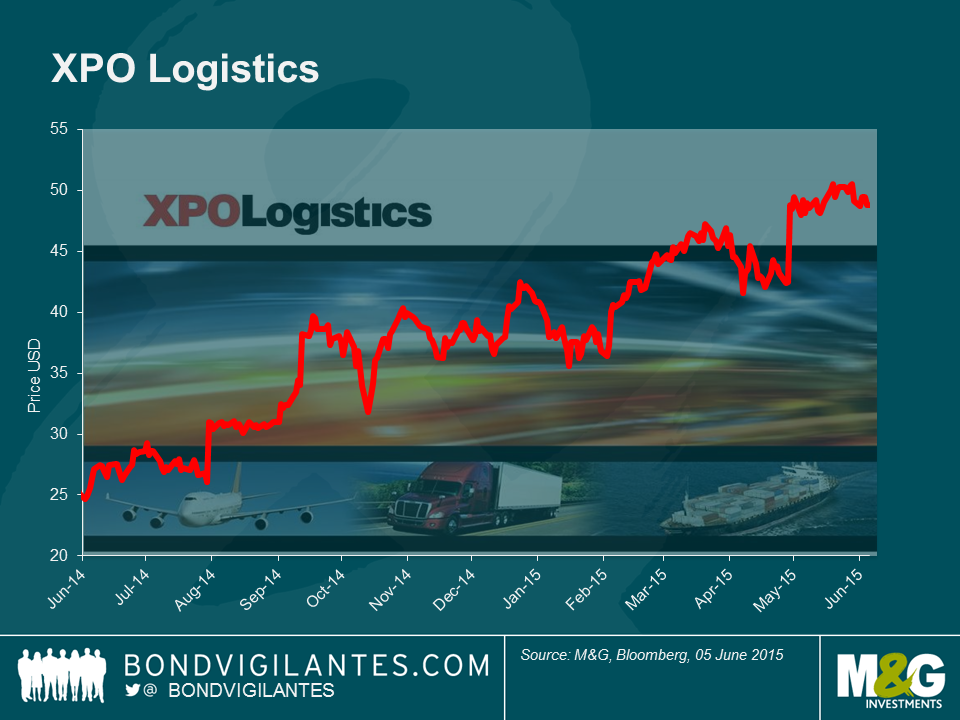XPO Logistics. A $2bn high yield transaction and why we didn’t play.
As value investors we would generally assert that every financial asset has its price. Few bond market offerings tick all the boxes, but if we are to be suitably compensated, and subject to certain red lines, we are generally sanguine.
Yesterday saw XPO Logistics, a third party US based logistics firm raise $2bn equivalent of debt across Euros and Dollars to part fund its acquisition of Norbert Dentressangle (ND), a French logistics player. Pro forma the acquisition of ND, the company will be a top 10 player globally with revenues of nearly $9bn, will acquire greater scale and a presence in a fragmented European market. The company enjoys multi-year contracts with high renewal rates, limited client concentration, a well-regarded management team with experience of making and integrating acquisitions and a track record of raising equity from sovereign wealth investors. Furthermore, capital expenditure should reduce over the coming years allowing for greater free cash flow generation which could be targeted towards debt reduction. Finally the company has adequate liquidity, an enterprise value of nearly $4bn, a share price that has nearly doubled in the last year, and may well continue to be supported by a multi-year sector consolidation phase.
So what is not to like? Firstly, the business carries a significant amount of debt. On our calculations the current debt load is almost six times EBITDA with the bond indenture allowing for the company to raise further debt, perhaps to fund further acquisitions. Largely though not entirely for this reason the debt is rated B1 by Moodys and B by S&P, essentially half way down the high–yield rating scale.
Secondly, the ‘asset light’ nature of the business is unlikely to result in a high recovery for creditors should the business get itself into difficulty. We would also question the synergies that can be delivered between the existing XPO business and Norbert Dentressangle given the geographic separation and would expect some integration headaches to come. Fourthly, this is an industry with historically low margins and fairly low barriers to entry. Finally, we also took issue with level of protection offered by the bond documentation. Covenants are generally loose which allows the company to incur significant debt that would rank prior to the new bonds (and further impact recoveries), guarantees are only offered from a relatively small part of the business and there is capacity to see dividends paid out to shareholders, even if this is not currently the intention.
Back to the earlier question of value. With a coupon paying 5.75% on the six year Euro notes and 6.5% on the seven year USD notes, and crucially with limited call protection which allows the bonds to be refinanced in the next few years, we ultimately took the view that this financial asset was not suitably compensating us and fell shy of our targeted yield for the name. That said, as a former colleague used to to say, ‘these yields aren’t door numbers.’ There may well come a time when we see a more attractive entry point & having done our credit work we will watch the bonds closely.
Finally at this point I should add that much of the excellent analysis that we are privy to is carried out in the first instance by our team of analysts. In this case I have Miriam Hehir to thank.
The value of investments will fluctuate, which will cause prices to fall as well as rise and you may not get back the original amount you invested. Past performance is not a guide to future performance.


18 years of comment
Discover historical blogs from our extensive archive with our Blast from the past feature. View the most popular blogs posted this month - 5, 10 or 15 years ago!


Bond Vigilantes
Get Bond Vigilantes updates straight to your inbox






